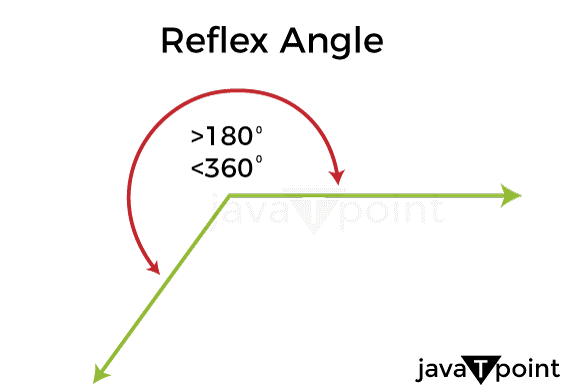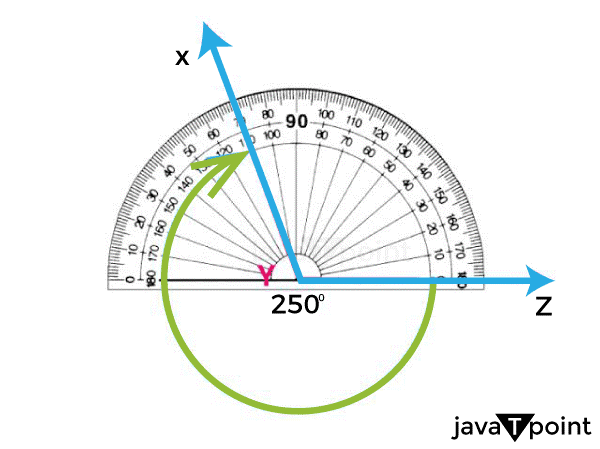Reflex Angle DefinitionAngles play a crucial role in the field of geometry, and are categorized into various types, including acute, obtuse, right, and reflex angles. However, reflex angles often receive less attention or are misunderstood compared to the other types of angles. Reflex angles are angles that measure greater than 180 degrees but less than 360 degrees. This article aims to provide a comprehensive understanding of reflex angles by discussing their properties, measurement, applications, types, and examples. Additionally, we will offer exercises to help readers test their knowledge on this important mathematical concept. What is a Reflex Angle?A reflex angle is an angle that measures more than 180 degrees but less than 360 degrees. To understand this better, let's take the example of a spinning top. Imagine you spin a top on a flat surface, and you draw a straight line on the surface to represent the starting position of the top. As the top spins, it moves away from the starting position and continues to spin until it completes a full circle. Now, imagine that the top continues to spin even after it completes a full circle and moves further away from the starting position. The angle formed between the starting position and the direction the top is spinning at this point is a reflex angle. This angle measures more than 180 degrees but less than 360 degrees. 
Real Life Example of Reflex Angles
Properties of Reflex Angles
Applications of Reflex Angles
How to Measure a Reflex AngleTo measure a reflex angle, we need to use a protractor, which is a tool specifically designed to measure angles. The steeps that we need to follow to measure a reflex angles are:

Let us take an example, to find the angle of a corner in a room, we need to follow following steps:
It is of paramount importance to note that a reflex angle is typically not used in your everyday measurements. This is because they are of greater measure than a straight angle (180 degrees) and can be difficult to visualize. In most cases, measuring acute angles (less than 90 degrees) or obtuse angles (greater than 90 degrees) is sufficient. Types of Reflex AnglesSimilar to the standard angles, reflex angles are also classified into three different types, which are:
Some Questions on Reflex AnglesTo better understand the concept of reflex angles, let us solve some practice problems of varying difficulty. Question- 1 Find the measure of the reflex angle formed by a clock's hour and minute hand at 4:45. Answer: The minute hand is at the 9 position while the hour hand is at 4. The angle formed by the hour hand is 430 = 120 degrees. The angle formed by the minute hand is 45/60360 = 270 degrees. The reflex angle formed is the difference between the two, which is 270 - 120 = 150 degrees. Question-2 Find the measure of the reflex angle formed by two lines that intersect each other, where the acute angles formed are 45 and 60 degrees respectively. Answer: The two acute angles formed by the intersecting lines add up to 45 + 60 = 105 degrees. Therefore, the reflex angle formed is 360 - 105 = 255 degrees. Question-3 In a regular octagon, what is the measure of the reflex angle formed by two adjacent vertices? Answer: Each interior angle of a regular octagon measures 135 degrees. The acute angle formed by two adjacent vertices of the octagon is half of this, or 67.5 degrees. Therefore, the reflex angle formed by these two adjacent vertices is 360 - 2(67.5) = 225 degrees. Question-4 In a triangle, one angle measures 135 degrees and another angle measures 60 degrees. What is the measure of the reflex angle formed by the remaining angle? Answer: The sum of the two known angles is 135 + 60 = 195 degrees. Therefore, the reflex angle formed by the remaining angle is 360 - 195 = 165 degrees. Question-5 In a parallelogram, one angle measures 110 degrees. What is the measure of the reflex angle formed by the adjacent angle? Answer: Since opposite angles in a parallelogram are congruent, the adjacent angle also measures 110 degrees. Therefore, the reflex angle formed by the adjacent angle is 360 - 110 = 250 degrees.
Next TopicRenaissance Definition
|
 For Videos Join Our Youtube Channel: Join Now
For Videos Join Our Youtube Channel: Join Now
Feedback
- Send your Feedback to [email protected]
Help Others, Please Share










